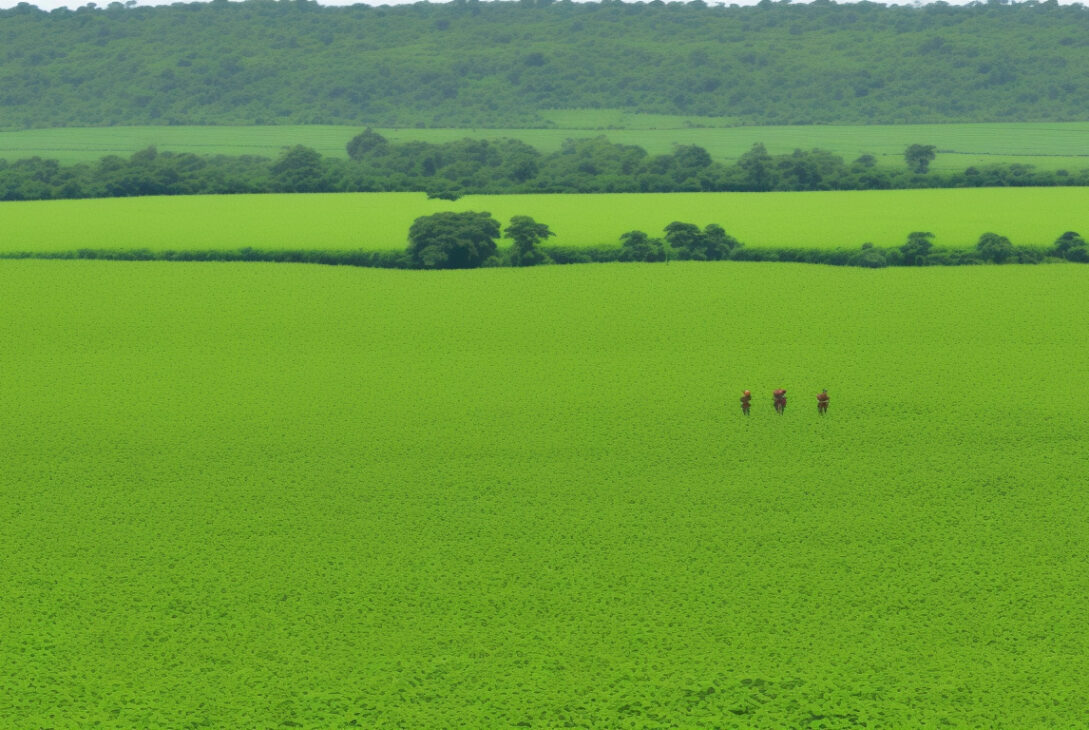How Malawi Is Bringing AI Technology to Small-Scale Farmers Without Smartphones
MULANJE, Malawi — In the rugged foothills of Mount Mulanje, 59-year-old small-scale farmer Alex Maere is a symbol of resilience and adaptation in the face of climate change. After Cyclone Freddy ripped through southern Malawi in 2023, Maere’s farm was devastated, with floods stripping his precious soil and leaving him with a mere fraction of his usual corn harvest. “This is not a joke,” Maere recalls, describing his farm’s transformation into a wasteland of sand and rocks in his village of Sazola.
In search of a way to rebuild and sustain his family, Maere turned to an innovative solution: an artificial intelligence (AI) chatbot designed to support farmers like him with expert advice, even without owning a smartphone. This initiative is part of a broader effort supported by the Malawian government and the nonprofit Opportunity International, aiming to empower small-scale farmers across the country who lack access to digital technologies.
AI to the Rescue: A New Kind of Farming Advisor
Malawi’s economy and food security hinge on agriculture, with over 80% of its 21 million people relying on subsistence farming. Yet, farmers here contend with extreme weather events — cyclones, floods, and droughts fueled by El Niño — that undermine yields and livelihoods. The agricultural sector is therefore central to the country’s current food crisis, which is a key issue in the upcoming national elections.
The AI tool, named Ulangizi—meaning “advisor” in Malawi’s Chichewa language—is a WhatsApp-based chatbot that offers farming advice in both Chichewa and English. Its design accounts for the reality that many farmers do not possess smartphones or are unable to read and write. Users can either type or speak their questions or take pictures of diseased crops to receive audio or text responses.
Richard Chongo, Opportunity International’s country director in Malawi, explains, “If you can’t read or write, you can take a picture of your crop disease and ask, ‘What is this?’ And the app will respond.”
Bridging the Digital Divide with Human Support
Despite its promise, accessibility remains a significant hurdle. The vast linguistic diversity of African farmers, low literacy rates, and unreliable electricity and internet connectivity make deploying AI tools challenging. This is where human intermediaries become indispensable.
In Maere’s community, 33-year-old Patrick Napanja serves as a “human in the loop,” carrying a smartphone loaded with the Ulangizi app to farmers without devices. “I used to struggle to provide answers to some farming challenges; now I use the app,” says Napanja, who supports around 150 to 200 farmers through weekly village meetings. However, poor connectivity often means waiting extended periods for the app to load, and sometimes trekking up hills to find a signal—a testament to the persistent infrastructural obstacles.
Real Impact: From Crop Failure to Financial Gain
Maere’s experience demonstrates the tangible benefits of this technology. The chatbot advised him to diversify his crops by growing potatoes alongside his traditional staples of corn and cassava. Following the AI’s guidance, Maere cultivated potatoes on half a soccer field and earned over $800 through sales—a significant boost to his family’s income. “I managed to pay for their school fees without worries,” he beams.
This story underscores a broader region-wide potential. Sub-Saharan Africa’s smallholder farms, numbering between 33 and 50 million, supply up to 80% of the food, yet productivity remains low despite vast fertile land. Experts see AI as a game changer, offering farmers tools to detect crop diseases, forecast weather, optimize fertilizer use, and access agricultural machinery.
Challenges and Cautions in AI Adoption
Technology specialists caution that the adoption of AI must be done carefully. Daniel Mvalo, a Malawian tech expert, emphasizes the fragile nature of trust in AI. “If it fails even once, many farmers may never try it again,” he warns, noting that incorrect diagnoses or recommendations could devastate crops and livelihoods.
To build confidence, the Malawian government has integrated Ulangizi with official agricultural guidelines, ensuring alignment with local farming practices. Webster Jassi, an officer at Malawi’s agriculture ministry, acknowledges the challenge of scaling the app across many rural areas where the cost and availability of internet and smartphones remain a barrier. Yet, he notes, farmers with access to the tool are already sharing knowledge with neighbors, boosting productivity through community collaboration.
Looking Ahead: Combining Technology with Tradition
Malawi’s experiment with AI in small-scale farming offers a hopeful model for other African nations confronting similar challenges. By tailoring AI tools to local languages, providing voice and image-based interaction, and supplementing technology with human support, the initiative is helping vulnerable farmers adapt to climate variability and improve food security.
The key to success, experts say, lies in blending cutting-edge digital innovation with traditional social networks and support systems, ensuring that technology uplifts—and does not leave behind—those living on the economic edge.
For more coverage on Africa’s development and innovation stories, visit AP News Africa Pulse.
This report is based on the work of The Associated Press, supported by the Gates Foundation for global health and development coverage in Africa.









